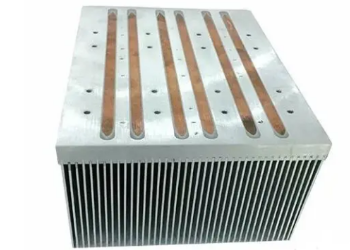Welding Heat Treatment: The Secret Weapon for Fusing Metals
In various manufacturing fields, welding technology has always played a vital role. Welding heat treatment is a critical factor in improving welding quality. This article will take you through the concepts, principles and practical applications of welding heat treatment while revealing the magical role of welding heat treatment in the metal fusion process.

(Welding heat treatment)
Basic concepts of welding heat treatment
Welding heat treatment refers to adjusting the internal structure of metal materials by controlling heating and cooling rates to improve the performance of welded joints. During the welding process, appropriate heat treatment can significantly improve the welded joint's strength, toughness and corrosion resistance.
How does welding heat treatment work?
1. Improve the internal structure of metal materials: By changing the heating and cooling rates, welding heat treatment can affect the grain size, phase composition and microstructure inside the metal materials, thereby improving the mechanical properties of the material.
2. Eliminate welding stress: The residual stress generated during the welding process will reduce the load-bearing capacity of the welded joint. These residual stresses can be eliminated through welding heat treatment, and the joint's stability can be improved.
3. Improve the toughness of the joint: Welding heat treatment can refine the grains and reduce crack sensitivity, thereby improving the toughness of the joint.
Practical application of welding heat treatment
1. Preheating treatment: Preheating metal materials before welding can reduce stress and cracks. Preheat treatment is typically applied to high-strength steel, cast iron, and aluminum alloys.
2. Post-heat treatment: After welding is completed, post-heat treatment is performed on the welded joint to eliminate residual stress and improve joint performance. Post-heat treatment is essential for materials such as some high-strength steels, stainless steels and titanium alloys.
3. Post-weld heat treatment: After welding is completed, high-temperature tempering treatment is performed on the entire welded structure, which can significantly improve the strength and toughness of the joint. This heat treatment method is widely used in aviation, shipbuilding, and machinery manufacturing.

(Welding heat treatment)
How to choose the appropriate welding heat treatment solution
1. Select a suitable heat treatment plan based on material type and mechanical property requirements. For example, for high-strength steel and stainless steel, preheating and post-heat treatment can effectively improve joint performance; for lightweight materials such as aluminum alloys and magnesium alloys, unique heat treatment methods should be considered to avoid problems such as intergranular corrosion and stress corrosion.
2. Consider the form and size of the structure. For large structures, segmented heating or cooling methods can reduce energy consumption and production cycles; for small parts or partial repairs, laser heating or resistance heating can achieve efficient and precise heat treatment.
3. Fully consider production efficiency and cost. The relationship between production efficiency and cost should be weighed when selecting a welding heat treatment solution. For mass production, automated heat treatment equipment can improve production efficiency; for single-piece or small-batch production, manual heat treatment methods can reduce costs.
4. Pay attention to environmental protection and energy-saving requirements. When choosing a welding heat treatment solution, you should choose an environmentally friendly and energy-saving heat treatment method. For example, using vacuum heat treatment methods can reduce pollutant emissions; using efficient and energy-saving heat treatment equipment can reduce energy consumption.
Supplier
PDDN Photoelectron Technology Co., Ltd. is a high-tech enterprise focusing on the manufacturing, R&D and sales of power semiconductor devices. Since its establishment, the company has been committed to providing high-quality, high-performance semiconductor products to customers worldwide to meet the needs of the evolving power electronics industry.
It accepts payment via Credit Card, T/T, West Union, and Paypal. PDDN will ship the goods to customers overseas through FedEx, DHL, by sea, or by air. If you want high-quality HEATSINKS, please send us inquiries; we will help.
